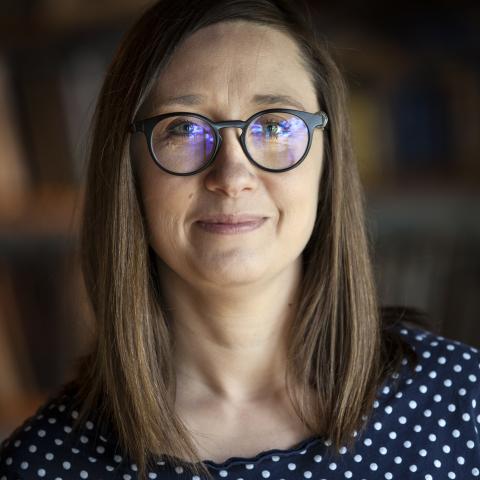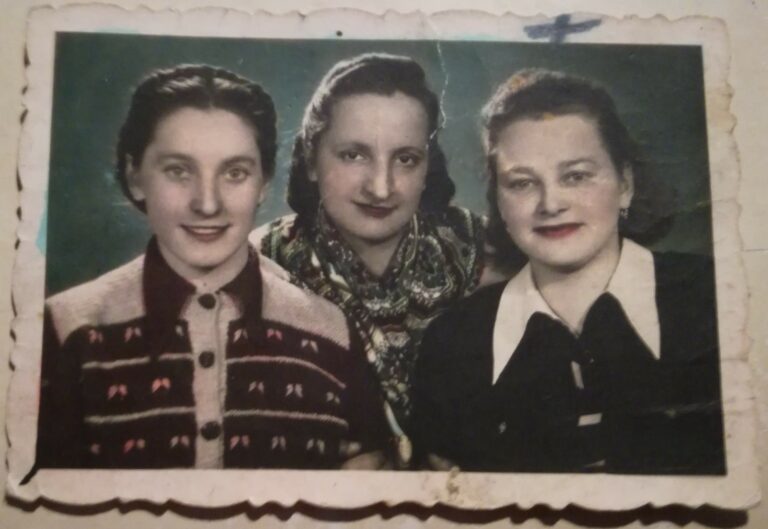Related sources:
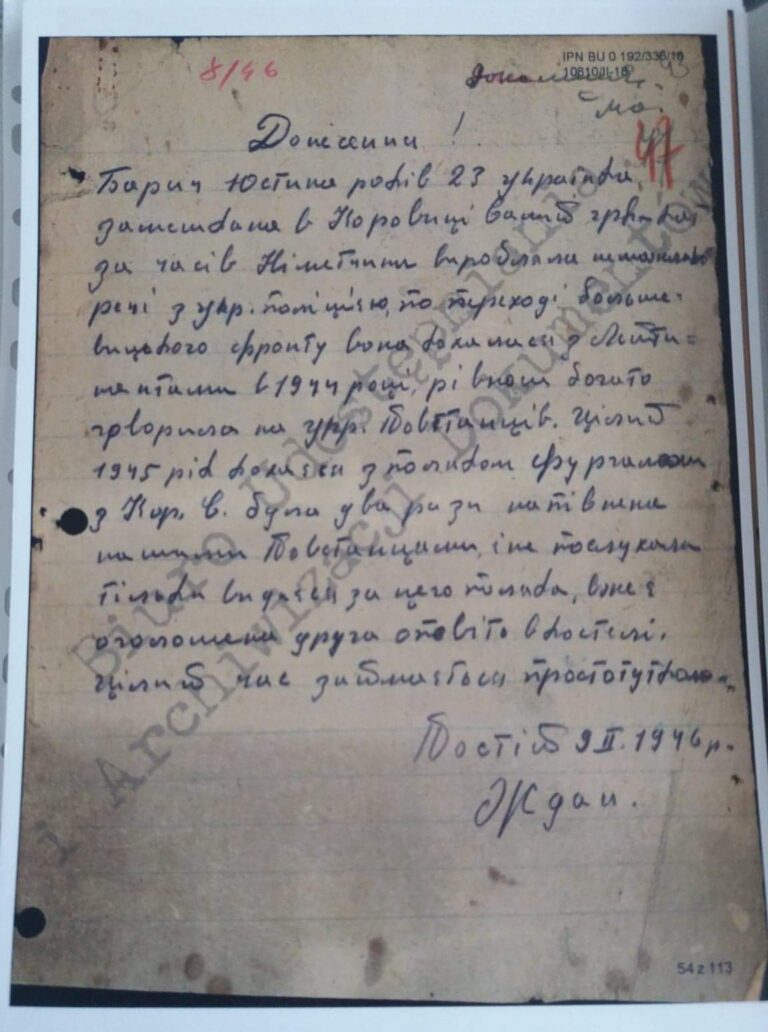
Denunciation of Justyna Barycz by “Zhdan”, February 9, 1946
This denunciation of a Ukrainian woman, probably done by a member of the SB OUN Żdan - commander of the Kuszczowa Division, self-defense (SKW) in the 3rd region of the OUN-Baturyn District II. Name unknown. Village Krowica Sama/ Коровиця Сама/ Korovytsia Sama was located within Lubaczów County within the 3rd region. The woman mentioned in the document was a 23-year-old Ukrainian, Justyna Barycz, who lived in Korovytsia Sama. The document accuses her of having sexual relationships with various men; first she was accused of having close relationships (sexual) with Ukrainian police during the war, then with a Polish man. (In 1945 she met a Polish man whom she married). The document also mentions...
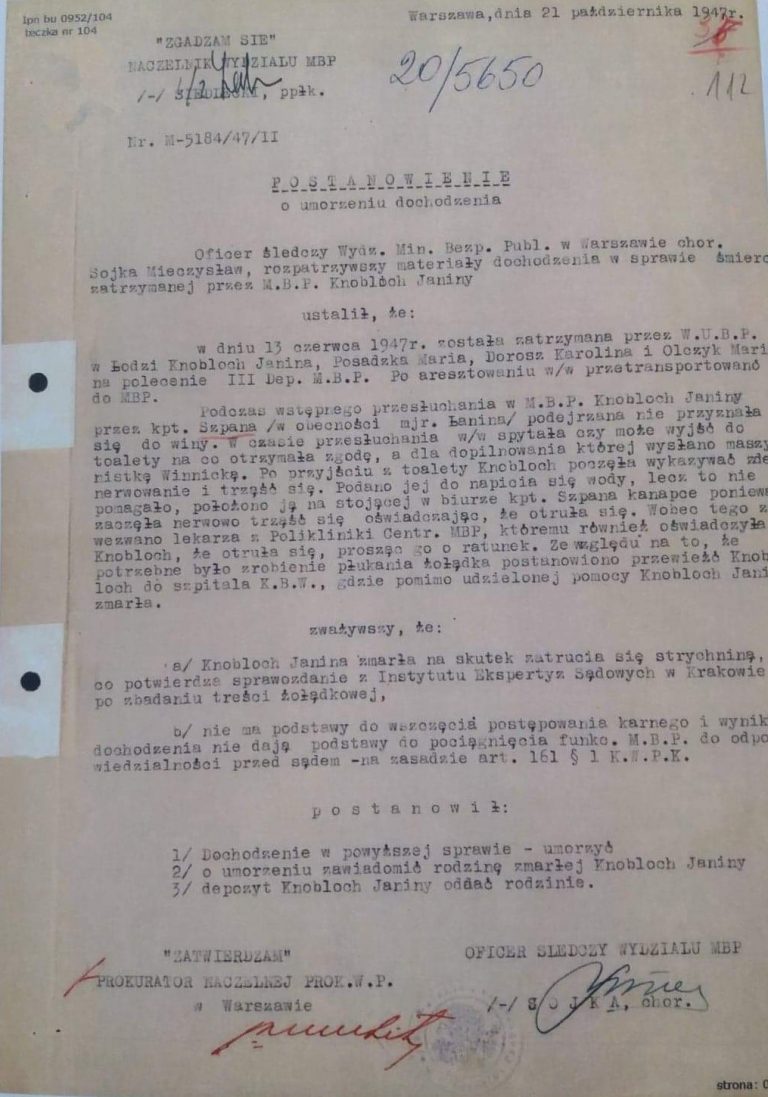
The decision to terminate the investigation against Janina Knobloch, liaison officer of the UPA in Poland, Warsaw, 1947
The notification states that the investigation into the death of Janina Knobloch (an arrested woman that the document mentions) was discontinued. She poisoned herself with strychnine in a bathroom during her interrogation. She was a liaison officer of OUN (Organization of Ukrainian Nationalists) District II. The document was prepared by an investigation officer of MBP (Ministry of Public Security).
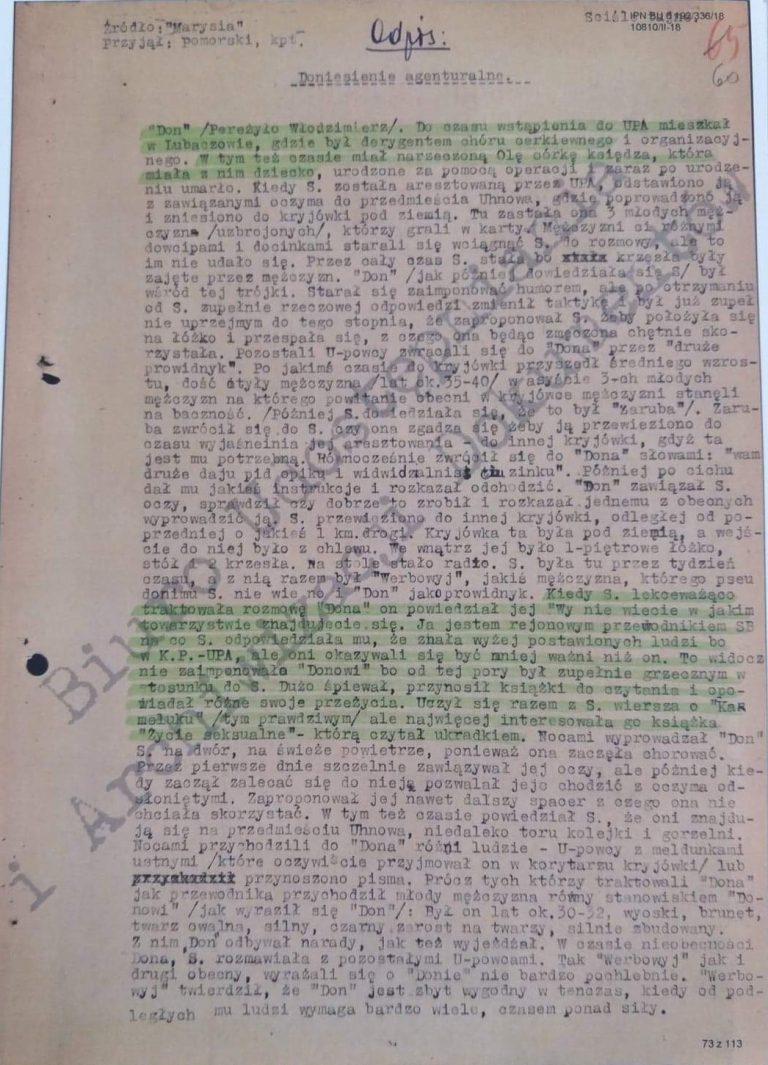
Agent “Marysia’s” report about activity of the Ukrainian Insurgent Army in postwar Poland, 1940s
This report, written by someone described as agent “Marysia,” is about Don (Wolodomyr Perezylo) and a woman identified as ‘S.’ The document discusses a romantic relationship (or perhaps an infatuation) between ‘S’ (possibly an OUN-B liaison in Poland – region V near Lublin/Zamość) and Don, a member of OUN security forces. The report was most likely written soon after the war. It is not completely clear what the purpose of writing this document was. The report was likely written in prison, quite possibly by ‘S’ in exchange for some favors from the Polish security forces. Yet the details that she provided regarding Don were not too harmful. Don appears as a person who...
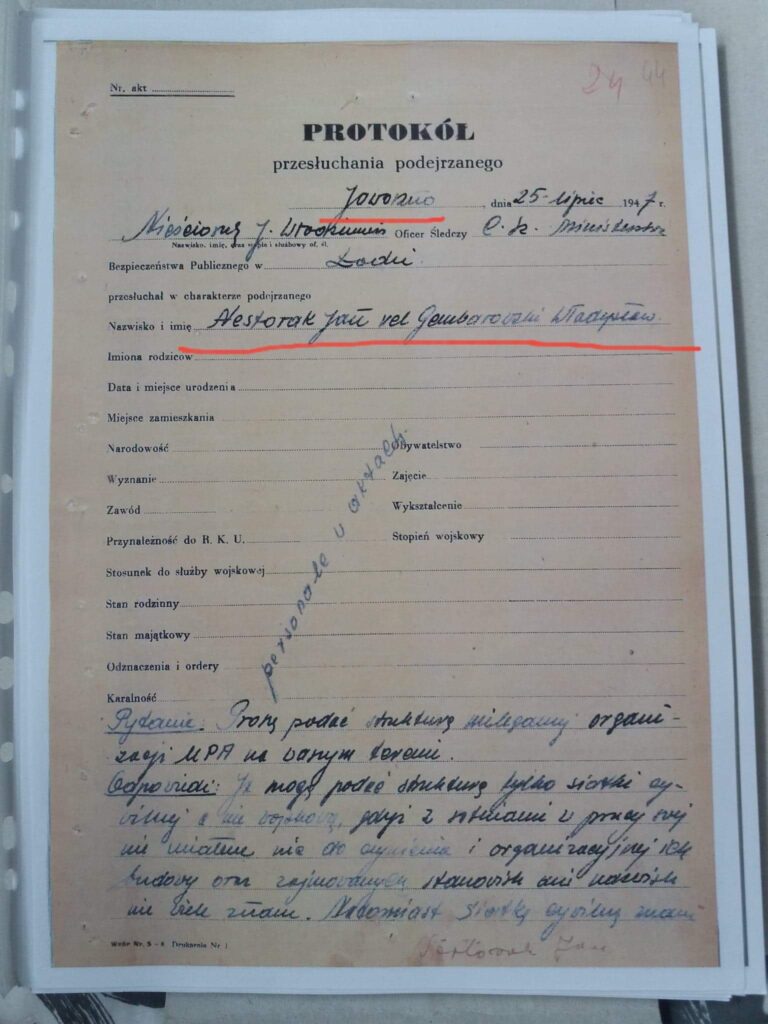
Interrogation of Ivan Nestorak, Jaworzno, July 25, 1947
This is an excerpt from the transcript of a long interrogation of Ivan Nestorak and his activities in the Ukrainian underground. Based on the information he provided, a female liaison was murdered by the Ukrainian insurgency. Her name was Maria Hac, and she was part of the UPA’s medical service. She had an STD and asked for money for treatment. She contacted Polish authorities MO (Citizens’ Militia) or UB (Department of Security) in Tomaszów Lubelski. She was murdered by the units of SB (Sluzhba Bezpeky) OUN (Organization of Ukrainian Nationalists). Some potential topics that can be discussed based on this source are gender-based violence in the Ukrainian underground, treatment of Ukrainian women by...

Vira Szot’s rehabilitation request, Warsaw-Czẹstochowa, 1994
Vira Szot was a Ukrainian woman and UPA liaison. After World War II, she arrived in southern Poland, where she set up transfer points for UPA members trying to reach Western Europe. Her arrest came on June 7, 1947. She was imprisoned at Jaworzno, Mokotów, and Fordon. She received a death sentence that was commuted to fifteen years, perhaps because she agreed to collaborate. She was released in 1956. She stayed in Poland after her release and in the 1990s, after the fall of Communism, applied for rehabilitation. In a letter from 1960 or 1961, which she called a confession and which is still in her IPN (Institute of National Remembrance) file, she...

Kateryna Vitko-Stakh memories, 1940s
Kateryna Vitko-Stakh’s excerpt is from a book of recollections of women who were members of the Ukrainian underground in the immediate postwar years, collected by Maria Pankiv in the 1990s. Pankiv is a journalist and member of the Ukrainian minority that has lived in Warsaw, Poland, since the 1990s. In those years, she worked for “Slovo,” a Ukrainian Archive in Warsaw. She interviewed a number of women who had been arrested in Poland for their involvement in the Ukrainian underground. Based on these conversations, she composed two volumes of their recollections. The chosen fragments reveal a story of Vitko-Stakh (liaison of the Ukrainian Insurgent Army under the pseudonym “Zozulya”) about her childhood, the...
Many stories could illustrate the struggles of Ukrainian women as members of the Ukrainian underground during World War II. One is the story of Marija Savchyn, who in 1939, at the age of fourteen, joined the female youth section (iunky) of the Organization of Ukrainian Nationalists (Orhanizatsiya Ukrayins’kykh Natsionalistiv [OUN]), which spearheaded the Ukrainian nationalist movement. While in high school during the Second World War in Przemyśl, Savchyn joined the Ukrainian underground...

